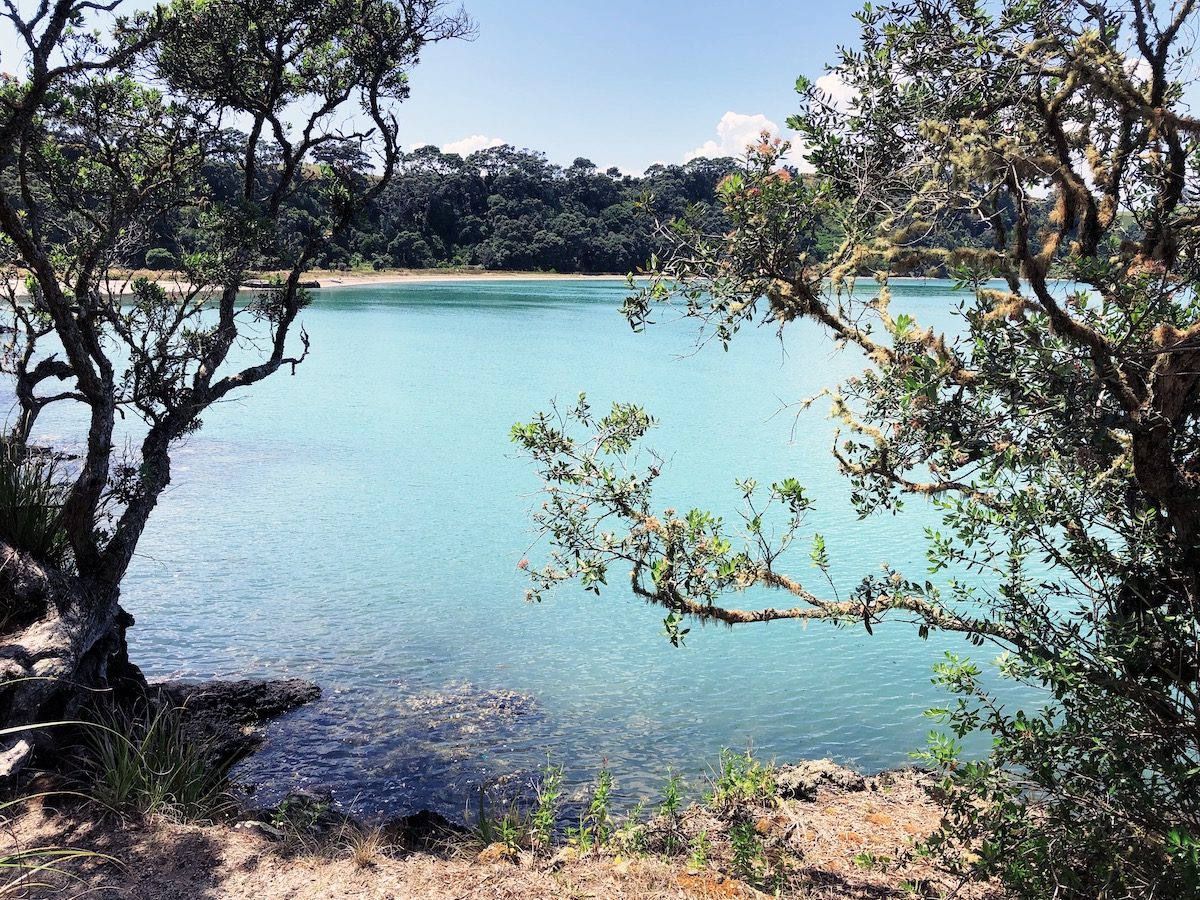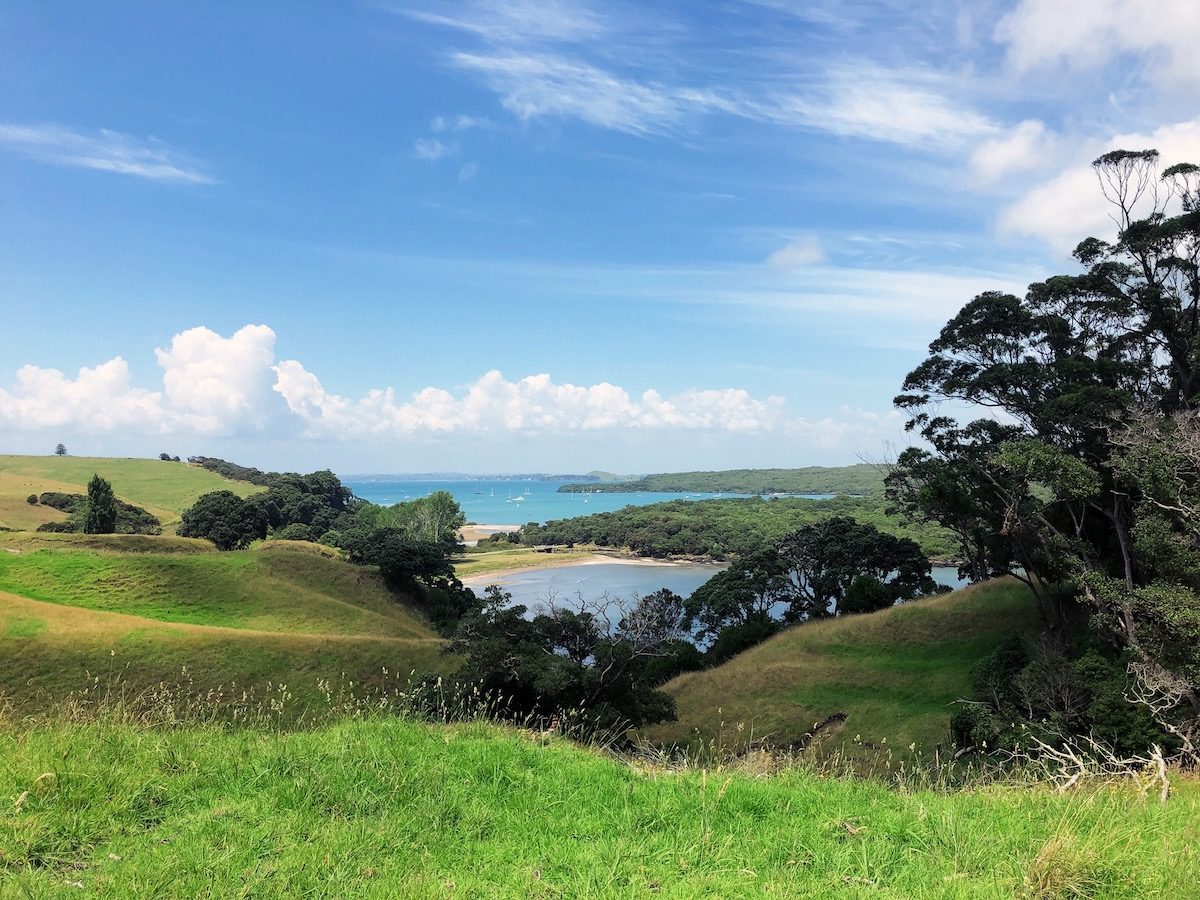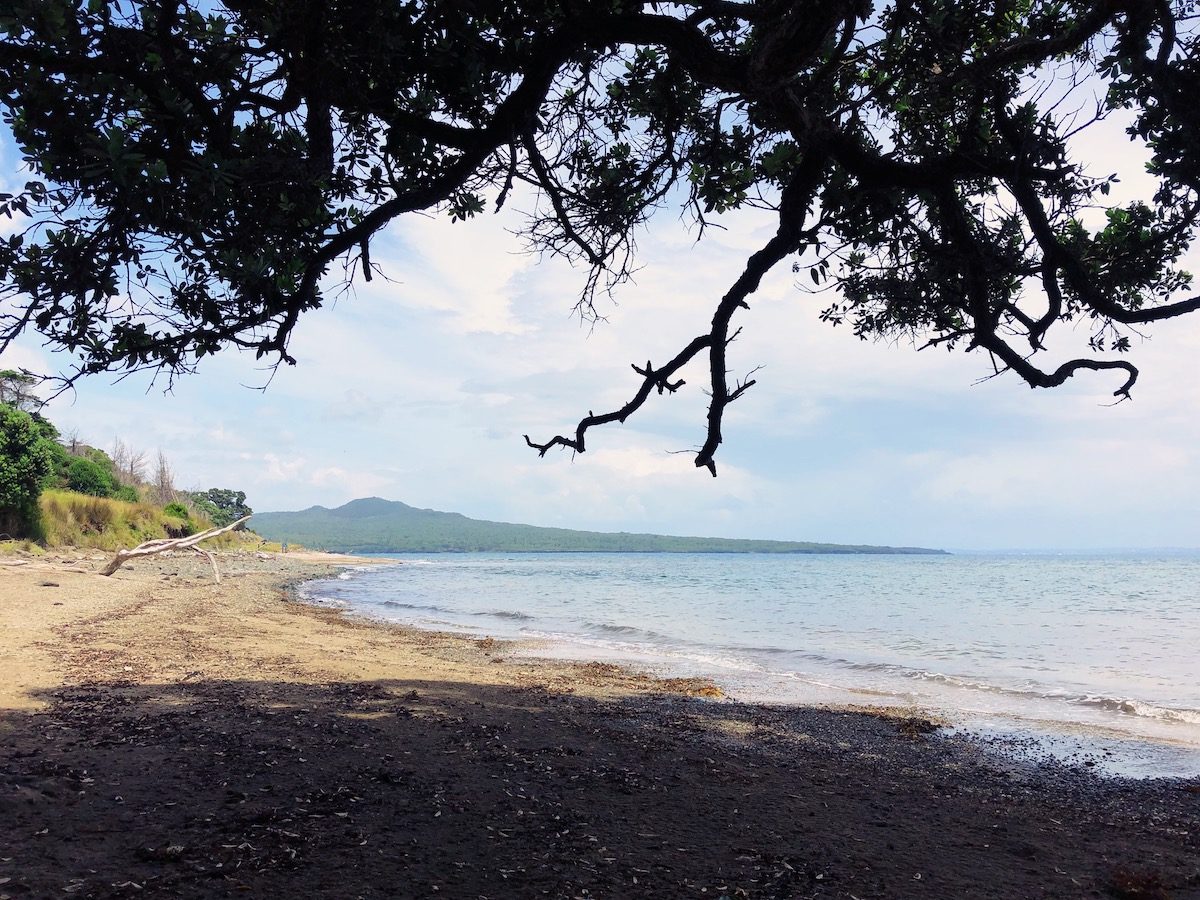There are certain places—show-stopping hotels, award-winning restaurants, local dive bars, or incomparable vintage shops—that are worth planning your whole trip around. The predator-free Rangitoto Island in Auckland, New Zealand, is one of those places—with new lodgings to stay overnight.
In Auckland, New Zealand, you can now stay in a 90-year-old, off-the-grid holiday house—or, in the local lingo, a bach, pronounced “batch”—on an island nature reserve in the Hauraki Gulf. Rangitoto Island, whose perfect volcanic cone is an Auckland landmark, visible from all over the city, was previously only open to day-trippers, but now, thanks to the restoration work of the Rangitoto Island Historic Conservation Trust, two baches—Bach 78 and Bach 114—are now rentable by the night.
Around a century ago, before Rangitoto was fully protected land, a small number of baches were built on the island. By the 90s, the buildings had fallen into significant disrepair, and the council was considering tearing them down. That’s when the trust stepped in. “There was a feeling that they needed to stay, that they were an important part of New Zealand’s cultural history,” says trust chair Elizabeth Andrews. It took volunteers five years to restore each bach—two that people can stay in, and one that serves as a museum about the island’s history—while rent from the baches supports the trust’s ongoing preservation work on the island.
Why it’s worth the trip:
A trip to Rangitoto is an opportunity to experience an island ecosystem full of native birds and forest—unlike anything you can see on the mainland. Prior to the arrival of people in New Zealand, the country had no land mammals, except a few species of native bat. Birds abounded, most of them unique to the island. With European colonization came the wide-scale introduction of predators like rats, possums, cats, and stoats, which—along with deforestation and habitat loss—has devastated many native bird species. Rangitoto and its neighboring island, Motutapu, are among the islands near Auckland that have undergone a painstaking regimen of trapping and habitat restoration in order to be rid of predators. The islands were officially declared predator-free in 2011, and since then, the Department of Conservation has helped re-establish many rare native bird species. On Rangitoto and Motutapu, you can hike, birdwatch, swim, and relax to the song of tieke, bellbirds, tui, and maybe even spot a rare endangered takahe, which has been successfully reintroduced and is now breeding on Motutapu.
You’ll like it here if…
You love birds, the outdoors, and walking. Rangitoto and Motutapu have an extensive network of well-maintained trails, and though none of the hikes are strenuous, it helps to be of moderate fitness. The walk from the ferry to Rangitoto’s summit (850 feet elevation) takes about one hour. Also if you like tranquility: The earliest ferry deposits the first Auckland day-trippers at around 8 a.m., and the last ferry leaves in the late afternoon. “Once the ferry’s gone, you have the island to yourself — you, and the birds,” says Andrews. “We’ve had takahe actually walking around Bach 78 coming to investigate from Motutapu, plus the tieke, the saddlebacks, and the other birds which are breeding on the island.”
Price breakdown:
Ferry: NZ$36 round trip from Auckland
Baches: from NZ$140/night
The crowd:
Rangitoto is an iconic Auckland day trip that attracts locals—especially people who love to boat, fish, and hike—and international visitors alike.
How to prepare:
Wear clothes you’re comfortable in and that are well-suited to the conditions; Rangitoto is geologically speaking very new, with lots of areas of craggy volcanic scree, so sturdy footwear is a must—as is sunscreen and a hat to protect yourself from the strong sun. Regardless of the forecast, bring a light rain jacket and warm layers, because conditions can change unexpectedly. A first-aid kit is also not a bad idea. In summer, be sure to bring swimwear and a towel for Motutapu’s beaches. There is no commerce on the islands and no opportunities to buy food or water once you leave the ferry, so bring all the food and water you need; if you’re staying at one of the baches, they have potable water. There are no public trash cans on the islands, so practice pack in, pack out, leave-no-trace principles. The Rangitoto baches are rustic and off-the-grid, with gas burners, cold running water, solar-powered lighting, and chemical toilets. When visiting, be very mindful of the islands’ predator-free status: check your gear for seeds and pests, and if you’ve booked a bach, complete the Department of Conservation Biosecurity Checklist and hand it to the Bach Manager or the Island Ranger when you arrive.
Pro-tip:
If you’ve booked one of the baches, wake up about an hour before dawn to hike to the Rangitoto summit and watch the sunrise while listening to the dawn chorus of birds before the day-trippers arrive on the 8 a.m. ferry.
While you’re in the area…
Be sure to visit both islands, which are connected by a short causeway. Rangitoto and Motutapu are very different. Motutapu is around 178 million years old, and has been continually inhabited for centuries—archeological evidence even shows Maori were living there when the eruptions that formed Rangitoto began (they vacated in a hurry). Rangitoto rose out of the sea around 650 years ago. It is a young island, rugged and dramatic, where Motutapu is weathered and smooth. Rangitoto has a rocky shoreline, while Motutapu has sandy beaches. Rangitoto is forested, while Motutapu has many areas that were cleared for farming. You can explore the remains of Rangitoto’s WWII installations (the island was used as a defense post to house troops), and you can climb through some of the volcano’s cooled lava tubes. Rangitoto supports over 200 plant and tree species, and is home to the largest pohutukawa forest in the world. It’s an unmissable sight in late December, when the trees, which are iconic in New Zealand, bloom bright red.














